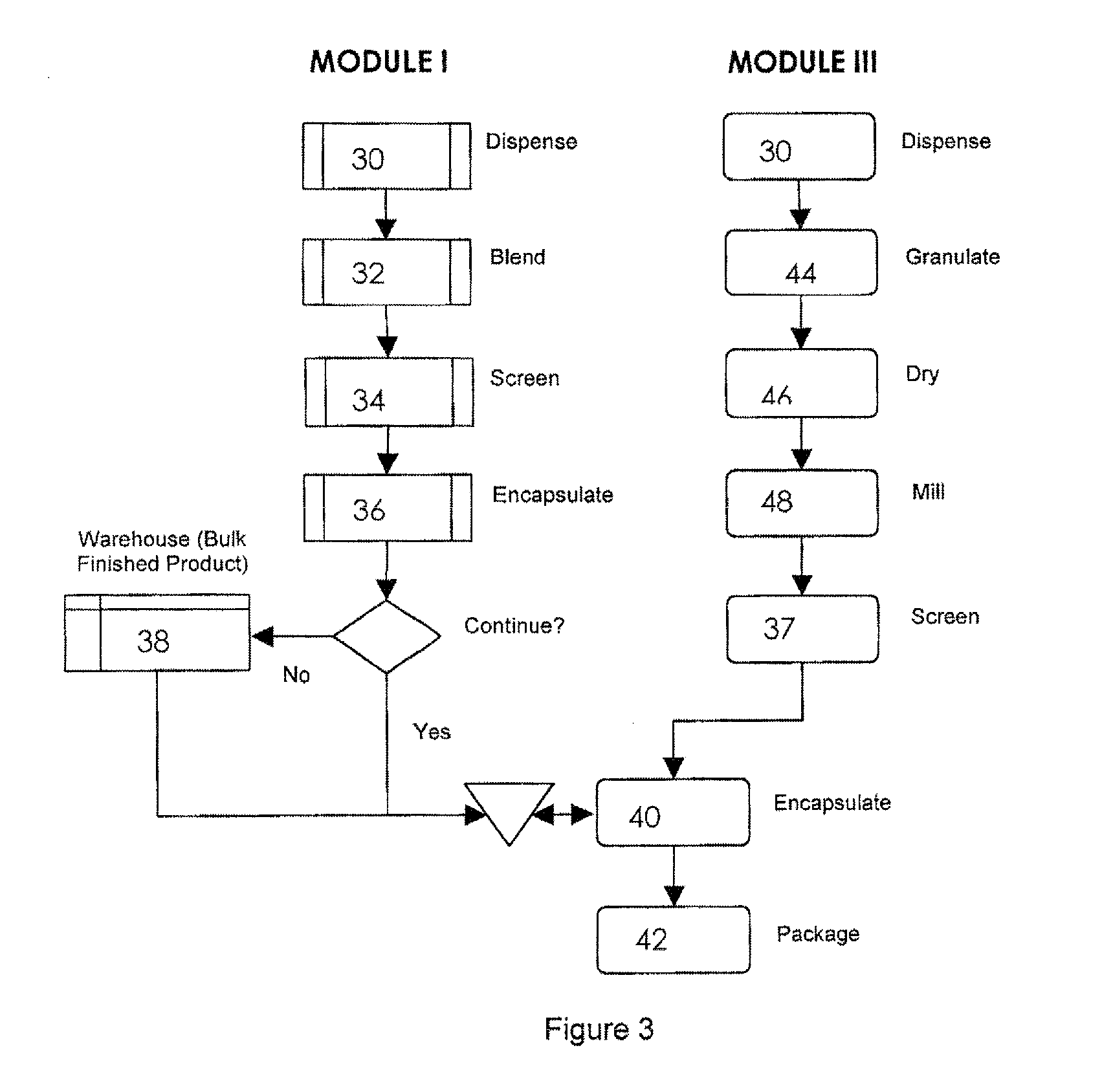Oral dosage combination pharmaceutical packaging
a combination and oral dosage technology, applied in the field of oral dosage combination pharmaceutical packaging, can solve the problems of complex development of pharmaceutical drug products in oral dosage forms at both the r&d level, and achieve the effects of reducing risk, reducing development costs, and increasing risk
- Summary
- Abstract
- Description
- Claims
- Application Information
AI Technical Summary
Benefits of technology
Problems solved by technology
Method used
Image
Examples
examples
[0032]The invention will now be illustrated in connection with the following working examples. As illustrated in FIGS. 2, 3 and 4, the process for filling a dual chamber or three piece capsule in accordance with the present invention involves two separate modules. The primary module (Module I, FIGS. 2 and 3; Module IV in FIG. 4) encapsulates a discrete formulation and creates a finished single entity product that can be warehoused or packaged and sold independently. It also can continue in the process immediately or after some storage to merge with the secondary module (Module II, FIGS. 2 and 4; Module III in FIG. 3) to form a finished fixed dose combination product. Utilizing the modular approach, predefined and validated modules would not require process development, characterization through extensive testing and validation for each novel fixed dose combination. Only the new modules would require this level of testing. In this manner, development and manufacturing costs can be con...
PUM
| Property | Measurement | Unit |
|---|---|---|
| physical property | aaaaa | aaaaa |
| thickness | aaaaa | aaaaa |
| solubility | aaaaa | aaaaa |
Abstract
Description
Claims
Application Information
 Login to View More
Login to View More - R&D
- Intellectual Property
- Life Sciences
- Materials
- Tech Scout
- Unparalleled Data Quality
- Higher Quality Content
- 60% Fewer Hallucinations
Browse by: Latest US Patents, China's latest patents, Technical Efficacy Thesaurus, Application Domain, Technology Topic, Popular Technical Reports.
© 2025 PatSnap. All rights reserved.Legal|Privacy policy|Modern Slavery Act Transparency Statement|Sitemap|About US| Contact US: help@patsnap.com



